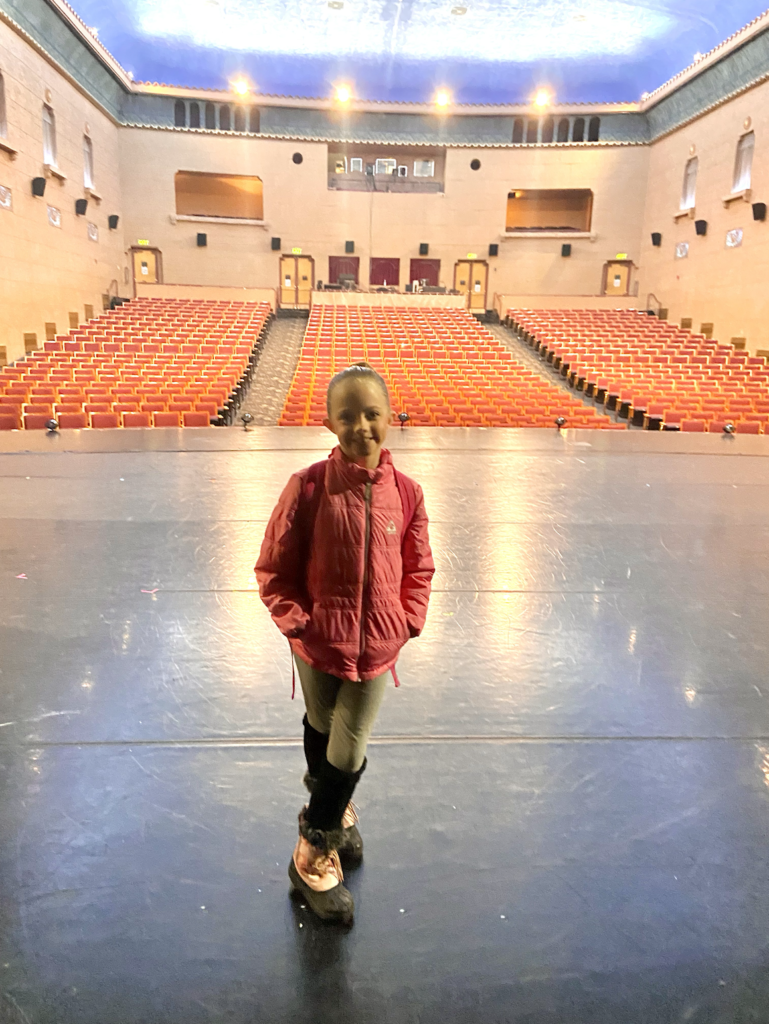There is an area of piano study that I feel is so important, yet is often overlooked in our teaching: LISTENING. How often do our students listen to great works of piano literature? How many of them have had exposure to classical music in their homes?

I was lucky enough to grow up in a home where we listened to classical music (and other types of music) a LOT. I remember hearing Baroque trumpet concertos in my Dad’s study on Sunday mornings, sitting in two love seats pushed together in our living room (pretending it was a boat) listening to Smetana’s Moldau, and when I hear Copland’s An American in Paris and Christopher Parkening classical guitar records I instantly think of my childhood. My parents both played a little piano, and I loved hearing my Dad play Bach’s d minor Prelude on the piano in the evenings. As I progressed in my piano study it was just natural for me to play the standard piano literature because it was so beloved and so familiar to me.

Me, during my first year of piano study
Sadly, this is not the reality for many of our piano students.
Many of our students have never heard Beethoven piano sonatas, or the Bach Brandenburg Concertos or have enjoyed the beauty of Chopin’s piano works. It is no wonder that it is so hard to get many of them to play and enjoy classical music, because they have not been exposed to much of it.
I know that it is hard with all of the important things we feel we need to cram into a weekly half-hour or 45-minute lesson with our piano students to find any time to devote to listening and music appreciation. I have, over the years, tried many different times to add an element of listening into my studio, but there is just so much music out there it can be overwhelming figuring out how to start and how to go about it.
I am so excited to introduce a new resource that I have been working on to try and solve this problem and to encourage our students to really get listening to some great music! The Shades of Sound Listening & Coloring Books are a wonderful way to get our students really listening and gaining an appreciation for classical music, and they take up minimal to no time during the weekly lessons. Each listening selection includes a fun coloring page, interesting background information on the piece and/or the composer and a couple of questions, so students will be engaged in the learning process and will enjoy learning about different musical works.

I am in the process of creating a longer Shades of Sound Listening & Coloring Book, but with Halloween coming up I decided to first finish up a Halloween book that will be SO fun for students during the next six weeks or so. The main book should be available within a few weeks.
Aspiring pianists need to know the literature, hear the greats perform, and be inspired and excited by the great music that is available! Just as writers need to read, read, read, pianists need to listen! Through this fun curriculum, students will learn about the musical periods and the great composers and their works. Listening repertoire selected includes selections from the standard solo piano literature, as well as solo piano and orchestra literature and orchestral works.
My hope is that students can add just 5-10 minutes of listening per day to their normal practicing. Listening to great music will change their understanding of music and will vastly increase their music history knowledge. It will excite and inspire them, encourage further study and listening, give them new pieces to add to their own repertoire wish list, infuse more great music into their lives, homes and families, and will boost their musicianship and expression to the next level.
Learn more about the Halloween Shades of Sound Listening & Coloring Book over in the Shop. The product description includes a list of the pieces included, preview images of some of the pages, as well as a link to a YouTube playlist students may use for their listening.
















































